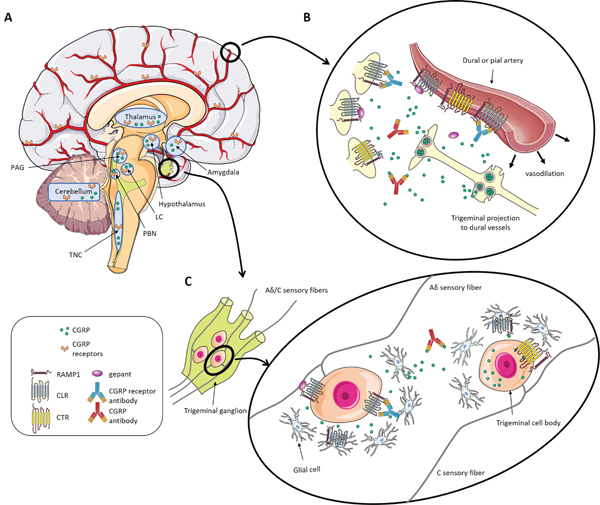Figure 1.

CGRP and CGRP receptor distribution in the peripheral and central nervous systems. A) In the brain, CGRP and its receptors are present in the thalamus, the amygdala, periaqueductal grey, locus coeruleus, trigeminal nucleus caudalis, parabrachial nucleus, hypothalamus, and the cerebellum. The receptors can also be found at the meningeal vasculature. B) CGRP is released from trigeminal axons onto blood vessels in the meninges where it is involved in vasodilation and activation of trigeminal neurons. CGRP targeting drugs likely act at this site to treat migraine. C) CGRP is released in the trigeminal ganglion by small C fibers and binds to its receptors on other neurons (Aδ fibers) and glial cells triggering neurogenic inflammation. CGRP targeting drugs likely act at this site to treat migraine since the trigeminal ganglion is located outside of the BBB. While the AMY1 receptor can also be found in the trigeminal ganglion, the CGRP receptor and the AMY1 receptor do not seem to colocalize on the same neuron at this site [87]. CGRP and the CGRP receptor are rarely co-localized on the same neuron. At this point, it is still unknown if AMY1 can be expressed on CGRP containing cells and our schematic representing both on the C fiber is still speculation. It is also unknown if the glial cells only express the CGRP receptor or also express AMY1. The schematic art used in this figure were provided by Servier Medical art (http://servier.com/Powerpoint-image-bank).
